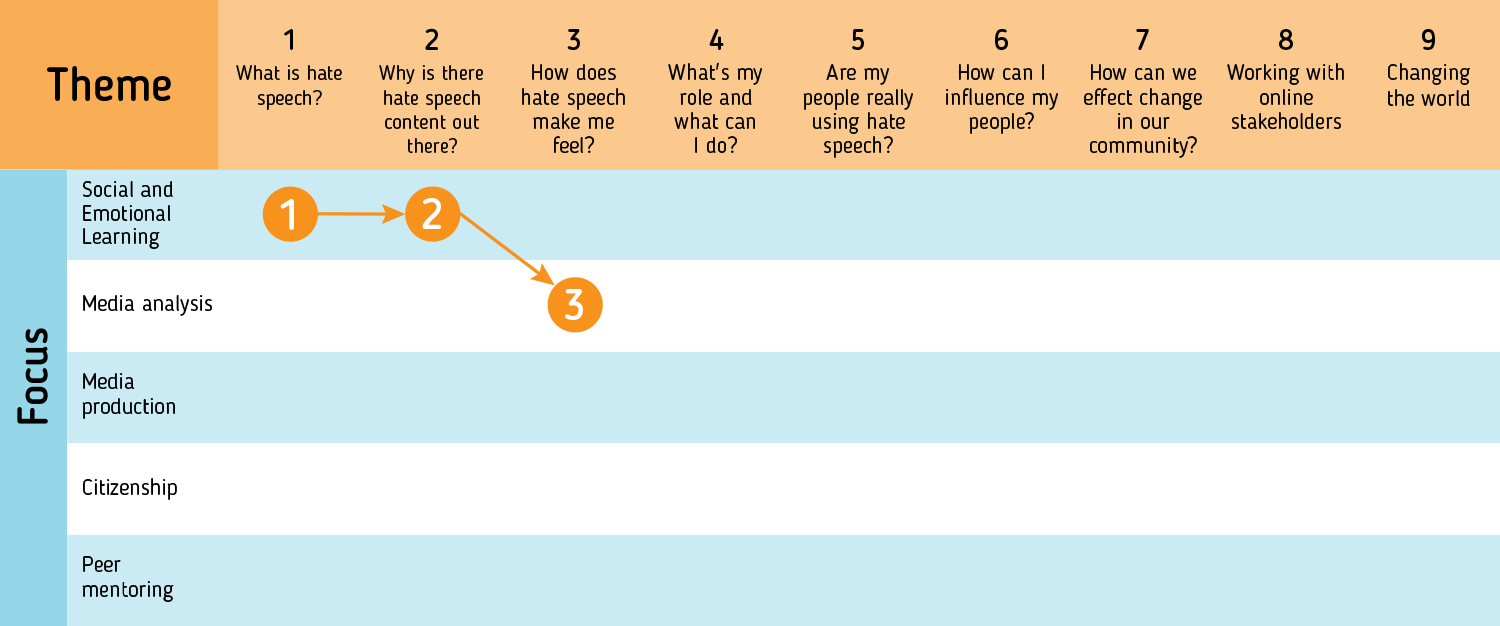Pathway 1: Introduction for younger students
In this section, we suggest an introductory pathway for younger students (11-13 year old) when putting SELMA into practice in your classroom or school. Please note that this is by no means restrictive; SELMA has been designed as an open and flexible framework which you can adapt to the needs, level and interests of the group(s) you work with. The SELMA journey articulated below has been developed for illustrative purposes, to give you a suggested ‘way in’ to the toolkit if you’re not sure where to start. However, we would certainly encourage you to explore the toolkit and use it creatively!

Step 1: Building an emotional vocabulary
In ‘Theme 1’, The Naming and sorting emotions activity has no direct association with hate speech but introduces students to the SEL concepts of sentiment (positive/negative) and energy (intensity) of emotions and maps useful vocabulary to those feelings. This begins to build more sophisticated routes for expression when students are later asked to feedback on how certain scenarios make them feel.
This can also be used in conjunction with the exercise that matches that emotional vocabulary to abstract examples of hate speech Matching emotions to hate speech.
Step 2: Exploring stereotypes and making assumptions
As part of the ‘SEL’ focus in ‘Theme 2’, you can explore how certain images and messages make us feel and how our own temperament and culture often affect how we respond. Begin by watching the People Like You video that places students own selves into media headlines and then work through the scenario images in Guess the Protagonist to further explore how we make assumptions based on character and stereotype.
Step 3: Shaping judgements based on additional information
In the ‘Media Analysis’ section under ‘Theme 3’, we explore how first impressions can change as we analyse a situation in more detail. Use the activity Thinking Outside the Frame with the whole class to determine how our views on situations might change as additional information is revealed. Then use the activity How do you feel? to build on the emotional vocabulary exercise in Step 1 to begin to analyse the variety of comments related to each of the images in the exercise.
Step 4: Where next?
Revisit ‘Theme 1’ to use what you have explored so far to begin to build an informed definition of what hate speech is and what it might mean to students.
